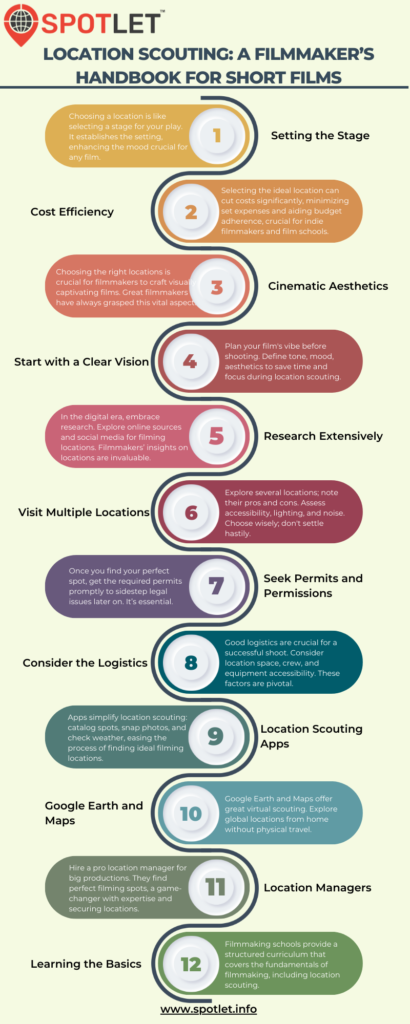
In the world of filmmaking, every shot counts, and the choice of location plays a pivotal role in bringing a script to life. Whether you’re a seasoned filmmaker or just starting your journey in the world of cinema, mastering the art of location scouting is essential. In this comprehensive guide, we will delve into the intricacies of location scouting, offering invaluable insights for filmmakers of all levels.
The Importance of Location Scouting
Before we dive into the nitty-gritty details of location scouting, let’s first understand why it’s such a critical aspect of filmmaking.
1. Setting the Stage
Location scouting is akin to finding the perfect stage for your play. It sets the backdrop for your story, helping to create the desired atmosphere and mood. Whether you’re shooting a romantic comedy or a spine-chilling thriller, the right location can make or break your film.
2. Cost Efficiency
Choosing the right film shoot location can also save you a considerable amount of money. A well-suited location can reduce the need for costly set construction and decoration. It can also help you stick to your budget, a crucial consideration for independent filmmakers and film schools.
3. Cinematic Aesthetics
For filmmakers aspiring to create visually stunning works of art, location scouting is a must. Your choice of location can significantly impact the cinematography of your film. Think about some of the best filmmakers in history; they all understood the importance of location in creating breathtaking visuals.
The Art of Location Scouting
Now that we’ve established the significance of location scouting let’s explore how to do it effectively.
4. Start with a Clear Vision
Before you even set foot outside, it’s essential to have a clear vision of what you’re looking for. Consider the tone, mood, and aesthetics of your film. This will help you narrow down your options and save time.
5. Research Extensively
In the digital age, research is your best friend. Utilize online resources and social media platforms to discover potential locations. Filmmakers often share their location experiences, providing valuable insights.
6. Visit Multiple Locations
Don’t settle for the first location that seems suitable. Visit multiple film shoot location options and take note of the pros and cons of each. Consider accessibility, lighting, and ambient noise when making your decision.
7. Seek Permits and Permissions
Once you’ve identified your ideal location, ensure you obtain the necessary permits and permissions. This step is crucial to avoid legal complications down the road.
8. Consider the Logistics
Logistics can make or break your shoot. Think about the practicalities of filming at your chosen location. Is there enough space for your crew and equipment? How accessible is it? These factors matter.
Tools of the Trade
As a filmmaker, you have access to an array of tools and resources to aid your location scouting endeavors.
9. Location Scouting Apps
There are various apps available that can streamline the location scouting process. They can help you catalog potential locations, take photos, and even check weather conditions.
10. Google Earth and Maps
Google Earth and Maps are excellent resources for virtual location scouting. You can explore locations worldwide without leaving your home.
11. Location Managers
For larger productions, hiring a professional location manager can be a game-changer. They have the expertise to find and secure the perfect locations for your film.
Filmmaking Schools and Academies
If you’re interested in pursuing a career in filmmaking, consider enrolling in a filmmaking school or academy.
12. Learning the Basics
Filmmaking schools provide a structured curriculum that covers the fundamentals of filmmaking, including location scouting.
13. Networking Opportunities
Attending a filmmaking school allows you to connect with like-minded individuals, including future collaborators and mentors.
Conclusion
In the world of filmmaking, location scouting is an art form that requires careful consideration and attention to detail. By following the tips and strategies outlined in this article, you can elevate your filmmaking skills and create visually captivating short films that leave a lasting impression on your audience.


